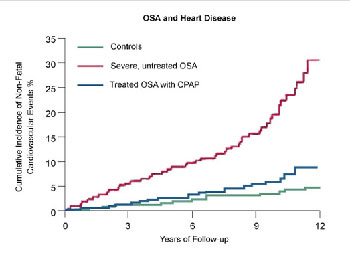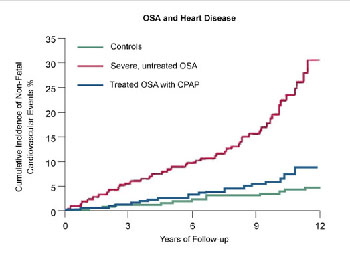
Assessing the Importance of Digital Health Data Security in Telemedicine
In the age of digital transformation, the healthcare sector has embraced technology with open arms, leading to an increased reliance on online platforms. Whether you are booking a virtual consultation or accessing your medical records remotely, the security of your digital health data is absolutely essential. This opinion editorial examines the multi-layered world of digital verification and cybersecurity in healthcare—a field that demands as much trust as it does technological innovation.
For decades, the idea of protecting personal information was focused on ensuring privacy in physical spaces like hospitals and clinics. Fast forward to today, and every healthcare interaction, from telemedicine consultations to the use of fitness trackers, requires some level of digital verification. When you encounter a message such as “Verifying that you are not a bot” or “Verifying your browser,” you are being guided through security checks designed to protect both your data and the system’s integrity. But what does this actually mean for you as a patient or a healthcare provider? Let’s get into some of the intricate, sometimes confusing bits of digital security in modern healthcare.
Digital Verification: More Than Just a Click
At first glance, pop-up messages verifying that you are not a bot might look like mere technical interruptions. In reality, these messages are a safeguard to ensure that human users, not malicious bots, are gaining access. In a world replete with cyber threats, even a small lapse in digital safety can lead to exposure of sensitive health information.
These safety checks often include:
- Browser verification to ensure compatibility with security protocols
- Authenticity confirmation to rule out bots or automated processes
- Additional layers such as CAPTCHA systems to thwart any automated hacking attempts
For many users, these details might seem like mere technical formalities. But when we take a closer look, we see they play a critical role in guarding personal health information against cyber attacks.
How Secure Verification Processes Enhance Patient Trust in Telehealth
The recent surge in telehealth and remote consultations has broadened access to healthcare. However, increased dependence on remote systems sometimes raises concerns about data security and privacy breaches. Many patients wonder if their sensitive medical information is safeguarded properly when transmitted online.
Security measures, such as digital verification, help build the trust necessary for successful telemedicine engagements. By confirming that every login or interaction is made by a real person rather than a bot, healthcare providers can keep your data under tight security. The process of verifying your browser or device is a simple yet effective method to prevent guided security breaches and ensure that your information stays safe.
An interesting aspect of these security checks is that they are often customizable to meet the specific needs of different health organizations. From hospitals using state-of-the-art two-factor authentication to small clinics leveraging secure socket layer (SSL) encryption, these systems have evolved into complex networks of interwoven safety protocols.
Exploring Two-Factor Authentication in Healthcare Platforms
One of the key tools in this digital defense arsenal is two-factor authentication (2FA). By requiring an additional layer of validation—often a temporary code sent to your mobile device—2FA significantly reduces the risk of unauthorized access.
Let’s break down how 2FA works in the context of healthcare:
- Initial Login: You begin by entering your username and password. This is the first layer of protection.
- Secondary Verification: Once initial credentials are accepted, the system sends a unique code to your verified phone or email address.
- Final Confirmation: You enter this code, completing the authentication process and gaining secure access to your health records.
Using these methods not only enhances security but also reinforces a culture of caution and careful guest verification in the healthcare ecosystem. The small extra step of entering a verification code is a minor inconvenience when measured against the potential risks of data theft and fraud.
Browser and Device Checks: Ensuring a Consistent and Secure Experience
One of the emerging trends in digital healthcare security involves the verification of browsers and devices. When you see a message like “Verifying your browser,” it is more than just a routine check—it is a movement to prevent malicious software from intercepting your connection.
Browsers are essential gateways to the digital world, and ensuring that they are secure is imperative. Whether you are using Chrome, Firefox, or Safari, each browser may present its own set of safety advantages and potential vulnerabilities. Healthcare websites often implement scripts that validate the browser’s security certificates, ensuring that the device meets a minimum threshold of safety.
Here’s a brief outline of why browser verification is important in healthcare:
- Ensures that the browser is up to date and free from known vulnerabilities.
- Confirms that cookies and session data, which contain important user information, are being handled securely.
- Helps to detect if the browser is being operated in a secure mode, reducing the risk of interference from malicious add-ons.
This process is key to maintaining a health ecosystem where every digital handshake between you and your healthcare provider is both safe and authentic.
Challenges in Implementing Online Healthcare Security Measures
While the benefits of these security measures are clear, the journey is not free of tricky parts. Healthcare organizations face several challenges and tied issues when implementing digital verification systems. Some of the most common hurdles include:
- Balancing Convenience and Security: Making the system safe without overwhelming users with off-putting extra steps.
- Dealing with Legacy Systems: Integrating modern security protocols into older IT infrastructures that might not be fully compatible.
- Adapting to Rapid Cyber Threats: Keeping up with the fast pace of evolving cyber threats and ensuring that your security measures are as current as possible.
- User Awareness: Educating users about best practices to recognize phishing attempts and other digital scams.
Organizations must continuously work on figuring a path through these complicated pieces. The interplay between modern security technologies and the old-fashioned human factor creates a web of tangled issues which, without proper attention, may leave patient data vulnerable.
Patient Perspectives: Trust, Transparency, and Data Security
The evolution of digital health systems has invited more discussions around patient perspectives regarding data security. As healthcare moves into the digital realm, patients increasingly demand clear information on how their data is protected.
Many patients view digital verification as a necessary inconvenience in exchange for the convenience and accessibility that digital healthcare brings. However, some remain wary. Their concerns include:
- Worry about their sensitive information getting intercepted during data transmission.
- Fears over who has access to their personal health records.
- Concerns that the complexity of security measures might accidentally lock them out of their own information.
Addressing these issues head-on requires ongoing dialogue between healthcare providers and patients. Transparency about security protocols, such as explaining what happens during each step of the verification process, can help ease fears and create a more trusting relationship.
Modern Innovations in Cybersecurity for Healthcare Applications
Innovation in cybersecurity is not just about protecting data—it is also about integrating these measures seamlessly into everyday healthcare interactions. Today’s innovations include advanced biometric verification, behavioral analytics, and even blockchain technology.
Let’s examine some of these modern advancements:
- Biometric Verification: Using fingerprints, facial recognition, or even iris scans to verify identity.
- Behavioral Analytics: Monitoring user behavior to detect unusual patterns that might indicate a breach.
- Blockchain Technology: Creating immutable records of data transactions to ensure that patient data has not been tampered with.
Each of these methods adds new layers of protection on top of traditional security checks, making the overall system even harder to breach. When these advanced methods are integrated into healthcare applications, they ensure that data security is maintained through the tiniest details.
Alternative Medicine and Digital Safety: An Overlooked Intersection
While modern medicine often takes the forefront of discussions around digital security, alternative medicine practices are not exempt from this digital evolution. Many practitioners of alternative therapies now maintain an online presence through digital health platforms, wellness apps, and virtual consultations.
The incorporation of security measures—such as browser verification and two-factor authentication—into these platforms is equally critical. Patients seeking alternative therapies expect the same level of protection as those consulting conventional health providers.
For instance, consider herbal remedy websites that store sensitive patient data about allergies and health histories. Without robust digital verification, this information might be left exposed to potential cyber threats. By ensuring that every user is a verified, genuine individual, these platforms not only protect data but also enhance the overall reliability of alternative healthcare practices.
Nutrition, Fitness, and Cybersecurity: Protecting Your Personal Health Narrative
In today’s society, nutrition and fitness tracking have evolved into phenomena that blend health and technology fluently. Whether you are using a calorie tracking app or a smart wearable to monitor your workouts, your personal details are being recorded and stored digitally.
For many, these tools offer a window into a healthier lifestyle, but they also open the door to data privacy concerns. Imagine if the platforms you use to monitor your sleep patterns or daily activity levels became targets for cyber attacks. The risks, though sometimes intimidating, are well addressed by strong digital verification processes.
Here are key strategies for pet owners of personal health data, such as those tied to nutrition and fitness:
- Regular Updates: Keeping apps and devices updated to ensure that you benefit from the latest security patches.
- Strong Passwords: Using complex and unique passwords for different health platforms.
- Awareness of Permissions: Being cautious about what data you share and with whom.
The roles of secure logins and browser verifications are super important in ensuring that data related to fitness and nutrition remains protected. With personal wellness becoming a digital narrative, every measure to protect your data helps secure a narrative that is as private as it is public.
Exploring the Hidden Complexities of Identity Verification in Medical Apps
Medical applications often require stringent identity verification protocols to ensure that the person requesting data or consultations is who they say they are. From verifying that you are not a bot to ensuring that your device is secure, these steps form the backbone of digital patient safety.
This multi-step process might sometimes feel off-putting, yet each stage is designed to protect you. In many cases, digital checks entail:
- Validating both the identity and the device used to access health records.
- Ensuring secure data communication channels through protocols like HTTPS.
- Integrating with trusted third-party verification systems to further bolster safety.
As more healthcare providers move towards mobile and cloud-based record systems, the little details of these verification processes become all the more significant. The added layers of protection are not there to complicate things, but rather to shield every transaction from those who might try to exploit a security gap.
Strategies for Healthcare Providers: Integrating Rigorous Cybersecurity Protocols
Healthcare organizations must continually update their security measures to guard against evolving online threats. This is particularly true when dealing with large amounts of sensitive data. Organizations are now investing in comprehensive cybersecurity training, incorporating advanced technologies, and adopting strict digital verification protocols.
Below is a table summarizing practical strategies for integrating robust cybersecurity protocols in healthcare:
| Strategy | Description | Benefits |
|---|---|---|
| Two-Factor Authentication | Requires users to provide two forms of identification. | Enhances security by adding an extra validation layer. |
| Browser Verification | Checks the security attributes of the browser during login. | Prevents potential breaches from outdated or vulnerable browsers. |
| Biometric Security | Utilizes fingerprint or facial recognition to verify identity. | Offers a convenient yet highly secure alternative to passwords. |
| Encryption Protocols | Encrypts data during transmission and while at rest. | Ensures that intercepted data remains unreadable. |
For healthcare providers, adopting these measures is not just about compliance—it’s about building trust. This process may include working through regulatory guidelines, revising infrastructure, and educating staff, but the rewards are clear: a secure, reliable system that gives both patients and practitioners peace of mind.
The Role of Government Regulations and Industry Standards in Cybersecurity
Cybersecurity in healthcare does not exist in a vacuum. Government regulations, such as the Health Insurance Portability and Accountability Act (HIPAA) in the United States and the General Data Protection Regulation (GDPR) in Europe, play a super important role in shaping the protocols that organizations must adopt. These regulations are designed to ensure that patient information is managed with the utmost precision and caution.
Key aspects include:
- Mandatory Audits: Regular checks to ensure that all security standards are being met.
- Data Encryption Requirements: A legally binding mandate to encrypt patient data both in transit and at rest.
- User Consent Protocols: Making sure that patients are fully briefed on how their data is collected, stored, and used.
Government guidelines help steer healthcare institutions through the twists and turns of what could otherwise be a nerve-racking process. By adhering to these regulations, organizations not only avoid hefty fines but also commit to a standard of care that is transparent and respectful of patient privacy.
Future Trends: The Evolution of Digital Security in Healthcare
Looking forward, the landscape of digital health security is poised for significant transformation. The rapid pace of technological innovation suggests that today’s robust protocols might soon become tomorrow’s standard practice. Emerging trends include more seamless integrations of artificial intelligence in threat detection, further refinements in biometric systems, and even the potential for decentralized data storage using blockchain technology.
In this evolving scene, healthcare providers and patients alike must keep their eyes open for changes that could redefine digital verification. Here are some trends to watch:
- AI-Driven Security Platforms: Systems that continuously learn and adapt to new threats.
- Enhanced Biometric Integration: More accessible and reliable biometric tools developed specifically for healthcare.
- Decentralization of Data: Using blockchain for tamper-proof record keeping and smoother patient data exchange.
- User-Friendly Authentication: The development of systems that balance high-level security with an intuitive user experience.
Each trend represents an opportunity to make the process of digital identity verification not only more secure but also more user-friendly. As these innovations continue to roll out, both patients and healthcare providers can look forward to a safer, more integrated digital environment.
Practical Advice for Patients: How to Stay Secure in a Digital Health Era
It’s not only healthcare providers that bear the brunt of security responsibilities—patients have a role to play, too. Knowing how to protect your own digital footprint is key in today’s technology-driven world. Here are some practical pointers to help you stay safe:
- Use Secure Networks: Always access sensitive health information over secure, private networks rather than public Wi-Fi.
- Regularly Update Your Software: Keep your devices, browsers, and apps up to date with the latest security patches.
- Be Cautious with Emails and Links: Verify the authenticity of messages that request your personal or security details.
- Utilize Strong, Unique Passwords: Ensure that each online account has its own complex password, and consider using a trusted password manager.
- Stay Informed: Keep an eye on news related to cybersecurity in healthcare, so you’re aware of any emerging threats or breaches.
Adopting these habits may seem like small tweaks in your daily routine. However, these fine points add up and collectively contribute to a much safer digital health experience for everyone involved.
Comparing Conventional and Alternative Approaches to Digital Security in Healthcare
While much of the focus in cybersecurity has traditionally been on conventional medicine platforms, alternative approaches, including holistic health websites and wellness apps, are emerging as significant players in the digital arena. Both sectors face similar off-putting threats from cyber attackers, yet they sometimes differ in how they approach digital security.
The conventional approach relies heavily on established, government-approved protocols and rigorous internal IT policies. In contrast, alternative health providers may lean towards more innovative, agile frameworks that integrate the latest advancements more quickly.
Below is a comparison that highlights a few fine shades between the two sectors:
| Aspect | Conventional Healthcare | Alternative Health Providers |
|---|---|---|
| Technology Adoption | Steady, compliance-based integration | Rapid, innovative application of new tech |
| Regulatory Oversight | Strict adherence to government regulations | Often self-regulated with emerging standards |
| User Education | Detailed guides and formal communication channels | More informal, community-based support systems |
| Security Measures | Heavy focus on encryption, 2FA, and compliance | Utilizes modern innovations like biometrics alongside traditional verification |
This table illustrates that while both conventional and alternative healthcare systems value security, they may vary in their execution and communication styles. Regardless of the approach, the core intent remains the same: maintaining the trust and safety of every individual’s digital health information.
Collaboration Across Sectors: A Unified Approach to Cyber Safety in Healthcare
One promising area of development in digital healthcare security is cross-sector collaboration. By working together, technology companies, healthcare providers, government agencies, and even academic institutions can pool their expertise to create more resilient security systems.
Collaborative efforts often involve:
- Sharing threat intelligence that can alert multiple parties to emerging exploits.
- Co-developing tools that simplify the process of digital verification without compromising safety.
- Jointly organizing cyber training programs to educate both healthcare staff and patients.
Such multi-disciplinary collaborations prove that protecting health data is not solely the responsibility of one stakeholder. Instead, it is a collective mission to ensure that every digital handshake within the healthcare ecosystem is secure and trustworthy.
Conclusion: A Future of Secure, Accessible Digital Healthcare
As we move further into a digitally integrated future, the security of personal health information remains a super important issue for everyone involved in healthcare. The processes that begin with a simple message—verifying that you are not a bot or confirming your browser’s safety—reflect a broader commitment to keeping data protected from the hidden tensions of cyber threats.
Modern healthcare is as much about ensuring physical well-being as it is about safeguarding digital identities. With innovative methods such as two-factor authentication, device verification, biometric security, and robust encryption protocols, the healthcare industry is steadily working through the nerve-racking challenges to establish a more secure digital environment.
Even as patients navigate a landscape where technology and health intertwine, being informed about these protective measures goes a long way. By understanding the subtle details of digital verification protocols and remaining vigilant about one’s own online habits, everyone can contribute to a future where healthcare is both accessible and secure.
In the final analysis, while the momentary interruptions to verify your identity might seem trivial, they are, in fact, the frontline defense in a battle against cyber threats. Through continuous technological improvements and open dialogue between stakeholders, digital health security will not only adapt to changing times but will continue to build trust, ensuring that every interaction—be it through a browser or a mobile app—is as safe as it is beneficial.
Originally Post From https://medicalxpress.com/news/2025-11-body-circadian-rhythm-overnight-cardiovascular.html
Read more about this topic at
Verify my identity
What is identity verification in cybersecurity


